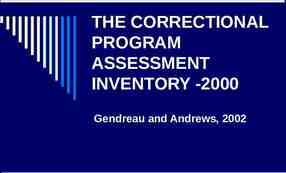Disordered Eating in PANS Inflammatory Brain Disorders Conference
24 Slides402.05 KB
Disordered Eating in PANS Inflammatory Brain Disorders Conference May 13-14, 2021 Cynthia Kapphahn, MD, MPH Medical Director, Comprehensive Eating Disorder Program Clinical Professor, Pediatrics Division of Adolescent Medicine, Stanford University School of Medicine 1
Disclosures I have no financial disclosures or conflicts of interest to disclose 2
Overview: Abnormal eating behaviors in PANS Diagnosing eating disorders in PANS Medical problems associated with restricted intake Approach to treating a child with restricted intake and PANS 3
There are those patients you’ll never forget Girl with severe malnutrition, anorexia nervosa: – Jumped on and off toilet so many times it broke off the wall – Took forever walk along patterned rug in hallway Boy with h/o picky eating, treated for an eating disorder, weight restored until – Suddenly stopped eating and drinking – Waiting in basement for aliens to bring back his real dad Boy referred to Eating Disorders Clinic for severe malnutrition: – Wouldn’t swallow saliva or take a deep breath because he’d weigh more Boy who said he wouldn’t eat until we made his sore throat feel better – Kept coughing with a tic that wouldn’t stop What’s going on?! These aren’t like the rest of my patients with eating disorders!! Wait a minute! They all have OCD! 4
Disordered Eating in PANS Sudden onset of restricted eating is a major diagnostic criteria for PANS May restrict food, fluids, or both 5
Would Food Restriction in PANS Meet Criteria for an Eating Disorder Diagnosis? MAYBE! If so, Avoidant Restrictive Food Intake Disorder (ARFID) most likely diagnosis Anorexia Nervosa also possible, though usually PANS patients not worried about body shape or size Excessive eating occasionally occurs with PANS, but unlikely to meet criteria for Binge Eating Disorder (BED) 6
What Is Avoidant Restrictive Food Intake Disorder (ARFID)? ARFID characterized by persistent failure to meet appropriate nutritional and/or energy needs, AND at least one of the following: – – – – Significant weight loss (or lack of expected gain) Significant nutritional deficiency Dependence on oral nutritional supplements or tube feeding Marked interference with psychosocial functioning NO disturbance in body image Eating disturbance not attributable to concurrent medical condition or not better explained by another mental disorder. When the eating disturbance occurs in context of another condition or disorder, severity of eating disturbance exceeds that routinely associated with the condition or disorder and warrants additional clinical attention. 7
PANS and Eating Disorders Why is it important for clinicians who treat eating disorders to recognize PANS? – Eating restriction can be severe enough to cause significant malnutrition and medical instability – Targeted treatment for PANS can full or partial resolution of restricted intake and other symptoms (Swedo 2017) – Residual eating symptoms may require treatment by eating disorder specialist – Need to develop better and more specific therapeutic interventions to address the types of food restriction seen in PANS Swedo, S., Frankovich, J., Murphy T, 2017. Overview of Treatment of Pediatric AcuteOnset Neuropsychiatric Syndrome. J. Child Adolesc. Psychopharmacol. 27, 562–565. 8
Reasons for Sudden Change in Eating with PANS Decreased appetite Sensory alteration/hypersensitivity Fear of contamination/poisoning Fear of choking or vomiting Difficulty swallowing Ritualistic/obsessive eating behaviors 9
PANS and Food Restriction Study of 43 youth, ages 4-14 yo, with PANS and OCD, by Murphy et al. (2015) noted: – 47% had food restriction at time of assessment, including – 23% significantly affected by food restriction and met criteria for ARFID Study of 29 children, ages 5-12 yo, with PANS and new abrupt onset of eating restriction or food avoidance, by Toufexis et al. (2015) noted: – – – – 66% contamination fear 28% fear of vomiting 21% fear of choking 10% concern about weight or body shape Toufexis MD, Hommer R, Gerardi DM, et al. Disordered eating and food restrictions in children with PANDAS/PANS. J Child Adolesc Psychopharmacol. 2015 Feb;25(1):48-56. Murphy TK, Patel PD, McGuire JF, et al. Characterization of the pediatric acute-onset neuropsychiatric syndrome phenotype. J Child Adolesc Psychopharmacol. 2015;25:14-25. 10
Stanford Study of Eating Restriction in PANS 354 consecutive patients, ages 4-18 years, presenting to PANS Clinic for initial assessment (9/12-6/19) Exclusion criteria: Did not meet strict diagnostic criteria for PANS (n 102) Symptom onset 5 years prior (n 24) Out of age range (n 11) Declined research (n 9) Unclear or incomplete history (n 1) N 207 Final study population N 100 WITH Restricted Eating N 107 NO Restricted Eating Kapphahn CJ, Peet B, Chan A, Thienemann M, Frankovich J. Disordered Eating Behaviors in Children with Restricted Eating and Pediatric Acute-onset Neuropsychiatric Syndrome (PANS). International Conf on Eating Disorders, Sydney, Australia, Proceedings, March 2020. 11
Demographics No demographic differences between patients with/without restricted eating – Age of PANS onset – Age at the first clinic visit – 61% male gender – 77% non-Hispanic White 8.9 3.4 years 10.1 3.5 years 12
Reasons for Restricted Eating - % Reporting Reason Reason for restricted eating - % reporting Selective eating 37% Appetite issues 23% Contamination fears 22% Concerns regarding swallowing/vomiting Concerns about weight/calories or nutrition 0% 17% 5% 5% 10% 15% 20% 25% 30% 35% 40% Note: May report multiple reasons for restricted eating 13
% of Patients with Weight Loss in Prior 3 Months, by Reason for Restricted Eating Percentage of patients with weight loss, by reason for restriction Selective eating 24% Appetite issues 48% Contamination fears 32% Concern regarding swallowing/vomiting 47% Concern about weight/calorie or nutrition 0% 33% 10% 20% 30% 40% 50% 60% Kapphahn CJ, Peet B, Chan A, Thienemann M, Frankovich J. Disordered Eating Behaviors in Children with Restricted Eating and Pediatric Acute-onset Neuropsychiatric Syndrome (PANS). International Conf on Eating Disorders, Sydney, Australia, Proceedings, March 2020. 14
Risk of Medical Complications from Disordered Eating in PANS Risk of medical instability increases with any of these factors: – More extreme restriction of food or fluids – Prolonged restriction of food or fluids – Larger proportion of weight lost – More rapid weight loss 15
Medical Complications of Restricted Intake Restriction of food and/or fluid can affect all organs Changes in heart rate, blood pressure, and temperature can be due to malnutrition, dehydration, weight loss, and/or vomiting If significant restriction of food or fluids, medical provider should assess and follow: – Physical signs of malnutrition/dehydration – Weight trends – Vital signs, including: Orthostatic pulse and blood pressure (lying down, then standing up) Temperature – Check initial EKG, for bradycardia, arrhythmias, or prolonged QTc – Electrolytes, including phosphorus and magnesium 16
Restricted Food Intake Hibernation Response Body adjusts to conserve energy when nutrition is inadequate – Low heart rate – Low temperature – Low blood pressure Survival mode – Blood flow primarily to heart / brain – Other organs neglected – Cool hands / feet – Growth/development/reproduction put on hold! 17
Approach to Child with Restricted Intake and PANS Seek expert care for PANS symptoms and disordered eating – Team may include medical provider, psychiatrist/psychologist, dietitian, occupational therapist – If symptoms significant, may need care from 2 teams of experts: PANS and Eating Disorders Treat infection/inflammation – Use expanding evidence base to guide interventions – May result in significant improvement in food/fluid restriction If severely restricting or medically unstable, may require hospitalization If obsessions or compulsions interfere with eating: – Psychiatric medications may help – If significantly malnourished, medication may not be as effective until the child has restored weight 18
Approach to Child with Restricted Intake and PANS Relaxation/biofeedback interventions, especially if anxious, nauseous, or afraid of choking/vomiting – Posture, breathing, relaxation – Other interventions for nausea: Acupressure points Anti-nausea electrical stimulation wrist bands Aromatherapy Behavior modification plan with specific goals and rewards may help 19
Approach to Feeding Child with Restricted Intake and PANS Approach to feeding: Be flexible in types of foods or fluids provided “Not eating is not an option” (but it is OK to drink your food!) Liquid nutritional supplements may be helpful (oral or nasogastric feeding) May need intravenous IV fluids, if dehydrated and not drinking Rarely, total parenteral nutrition (TPN) if unable to eat or drink for prolonged time Continuously reassess opportunities to expand and adjust what’s offered – Rapidly shifting symptoms – Be ready to adapt and change 20
Approach to Feeding Child with Restricted Intake and PANS For food or fluid aversions, balance accommodation with exposure If highly anxious or compulsive – Start with safe foods, using liquid nutritional supplements if needed – Progress to gradual exposure to foods or situations that cause anxiety or fear, within support framework encouraging incremental progress toward expanded diet and increased intake If disordered eating patterns continue even after acute PANS flare, pursue evidence-based therapy for treatment of eating disorders (Lock 2015) 21
Approach to Child with Restricted Intake and PANS Family involvement is very valuable – Families often know preferred foods and drinks – Children may need extensive encouragement and support to eat and drink – Separation anxiety may make it difficult to be away from family members 22
Approach to Child with Restricted Intake and PANS Principles of family-based therapy (FBT) are useful in treating abnormal eating during and after acute PANS episode Empower parents to be in charge of meals for child Externalize illness – don’t blame child, just the illness Pragmatic approach to getting in enough nutrition to gain weight: – Don’t need to know why – Just need to eat! 23
References PANS specific resources: – Kapphahn CJ, Peet B, Chan A, Thienemann M, Frankovich J. Disordered Eating Behaviors in Children with Restricted Eating and Pediatric Acute-onset Neuropsychiatric Syndrome (PANS). International Conf on Eating Disorders, Sydney, Australia, Proceedings, March 2020. – Murphy TK, Patel PD, McGuire JF, et al. Characterization of the pediatric acute-onset neuropsychiatric syndrome phenotype. J Child Adolesc Psychopharmacol. 2015;25(1):14-25. – Peet B, Kapphahn CJ, Chan A, Thienemann M, Frankovich J. Comorbid Symptoms in Children with Restricted Eating and Pediatric Acuteonset Neuropsychiatric Syndrome (PANS). International Conference on Eating Disorders, Sydney, Australia, Proceedings, March 2020. – Thienemann M, Murphy T, Leckman J, et al. Clinical Management of Pediatric Acute-Onset Neuropsychiatric Syndrome: Part I-Psychiatric and Behavioral Interventions. J Child Adolescent Psychopharmacol. 2017 Sep;27(7):566-573. – Toufexis MD, Hommer R, Gerardi DM, Grant P, Rothschild L, D'Souza P, Williams K, Leckman J, Swedo SE, Murphy TK. Disordered eating and food restrictions in children with PANDAS/PANS. J Child Adolescent Psychopharmacol. 2015 Feb;25(1):48-56. Eating Disorder specific resources: – Golden NH, Katzman DK, Sawyer SM, Ornstein RM, Rome ES, Garber AK, Kohn M, Kreipe RE. Update on the medical management of eating disorders in adolescents. J Adolescent Health. 2015 Apr;56(4):370-5. – Kapphahn CJ, Derenne J. Avoidant/Restrictive Food Intake Disorder in Children and Adolescents. Adolescent Medicine State of the Art Reviews. 2018, Fall;29(2):260–278. – Lock J. An update on evidence-based psychosocial treatments for eating disorders in children and adolescents. J Clin Child Adolescent Psychol 44:707–721, 2015. – Society for Adolescent Health and Medicine, Golden NH, Katzman DK, et al. Position Paper of the Society for Adolescent Health and Medicine: Medical management of restrictive eating disorders in adolescents and young adults. J Adolescent Health. 2015;56:121-5. 24





























